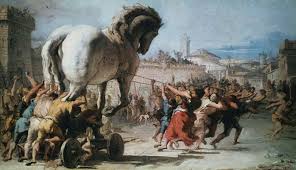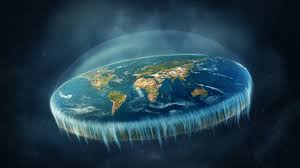Introduction
Biggest History Blunders often look to history for lessons, but sometimes even the best historians and researchers get it wrong. These historical blunders have led to misunderstandings, misconceptions, and sometimes even large-scale consequences. Let’s delve into some of the most significant mistakes in history and explore how these errors have impacted our understanding of the past.
The Trojan War: Fact or Fiction?

The Legend of Troy
For centuries, the story of the Trojan War, as depicted in Homer’s “Iliad,” was considered a myth. The tale of Helen of Troy, the wooden horse, and the epic battle between the Greeks and the Trojans captured imaginations but was largely seen as fictional.
The Discovery of Troy
In the 19th century, archaeologist Heinrich Schliemann discovered the ruins of what is believed to be the ancient city of Troy in modern-day Turkey. This discovery led to a reevaluation of the historical accuracy of the “Iliad” and suggested that there might be some truth to the legend.
Misinterpretations and Consequences
Despite the discovery, there are still many debates about the historical accuracy of the Trojan War. Some historians argue that Schliemann’s findings have been misinterpreted and that the actual events may have been much different from the epic tales. This blunder highlights the challenges of separating myth from history.
The Flat Earth Theory

Ancient Beliefs
Contrary to popular belief, educated people in the ancient world, such as the Greeks, knew that the Earth was spherical. Pythagoras and Aristotle provided evidence supporting a round Earth long before the Middle Ages.
The Myth of Medieval Flat Earth
A widespread misconception is that people in the Middle Ages believed the Earth was flat. This myth likely originated in the 19th century and was perpetuated by writers looking to portray the Middle Ages as a time of ignorance.
Correcting the Record
Modern historians have debunked the myth that medieval scholars believed in a flat Earth. This historical blunder has been corrected, but the misconception persists in popular culture.
The “War of the Worlds” Panic
Orson Welles’ Broadcast
In 1938, Orson Welles performed a radio adaptation of H.G. Wells’ “War of the Worlds.” The broadcast was presented in a news bulletin format, leading many listeners to believe that a Martian invasion was actually occurring.
The Myth of Mass Panic
Reports of widespread panic and hysteria following the broadcast were exaggerated by the media. In reality, only a small number of people were genuinely frightened, and most listeners understood that it was a fictional performance.
The Impact of Exaggeration
This historical blunder demonstrates how media exaggeration can create lasting misconceptions. The idea of mass panic has overshadowed the actual impact of the broadcast and has become part of popular folklore.
The Rosetta Stone: Misunderstanding Hieroglyphs
Discovery and Significance
The Rosetta Stone, discovered in 1799, was crucial in deciphering Egyptian hieroglyphs. The stone features the same text in three scripts: Greek, Demotic, and hieroglyphic, allowing scholars to unlock the secrets of ancient Egyptian writing.
Early Misinterpretations
Before the Rosetta Stone, many attempts to understand hieroglyphs were based on incorrect assumptions. Scholars believed hieroglyphs were purely symbolic rather than phonetic, leading to numerous misinterpretations.
The Breakthrough
Jean-François Champollion’s work on the Rosetta Stone in the 1820s finally revealed the phonetic nature of hieroglyphs. This breakthrough corrected centuries of misunderstandings and opened up new avenues for studying ancient Egyptian culture.
Also Read Ways Nigeria Can Solve Food Problem In the Country
The Missing Nixon Tapes
Watergate Scandal
The Watergate scandal of the early 1970s led to the resignation of President Richard Nixon. Central to the investigation were audio tapes that recorded conversations in the Oval Office, which were subpoenaed as evidence.
The 18.5-Minute Gap
One of the most infamous aspects of the Nixon tapes is the 18.5-minute gap in a crucial recording. The gap led to speculation about what was said and why it was erased, fueling conspiracy theories and mistrust.
Historical Impact
The missing tapes have left historians with an incomplete picture of the Watergate scandal. This blunder in record-keeping has made it challenging to fully understand the extent of the activities and conversations that took place during that period.
Conclusion
History is full of blunders and misunderstandings that have shaped our perception of the past. From misinterpreted archaeological finds to media exaggerations, these mistakes remind us of the complexities of historical research and the importance of critical thinking. By examining these errors, we can gain a better understanding of how history is constructed and strive to avoid similar pitfalls in the future.
FAQs
1. Why is the Trojan War considered a historical blunder?
The story of the Trojan War was long considered a myth until archaeological discoveries suggested it might be based on real events. However, debates about the accuracy of these interpretations make it a notable historical blunder.
2. What was the Flat Earth Theory misconception?
The misconception that people in the Middle Ages believed the Earth was flat was popularized in the 19th century. In reality, educated individuals in the ancient and medieval periods knew the Earth was spherical.
3. Did the “War of the Worlds” broadcast cause mass panic?
Reports of mass panic following Orson Welles’ 1938 radio broadcast of “War of the Worlds” were exaggerated. The actual level of panic was much lower than commonly believed.
4. How did the Rosetta Stone correct misunderstandings of hieroglyphs?
The Rosetta Stone allowed scholars to decipher Egyptian hieroglyphs, revealing their phonetic nature and correcting earlier symbolic interpretations.
5. What is the significance of the missing Nixon tapes?
The 18.5-minute gap in the Nixon tapes has fueled speculation and conspiracy theories, leaving historians with an incomplete understanding of the Watergate scandal.


